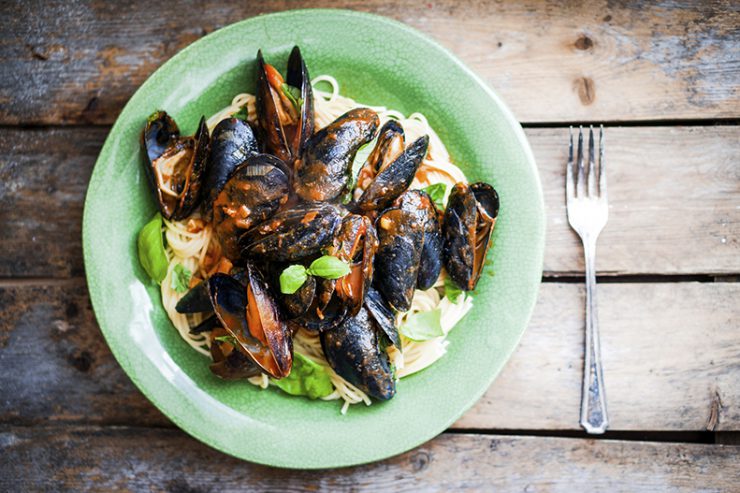Most dietary guidance recommends eating many types of seafood, but you may be wondering where shellfish fits in. In general, it’s a healthy addition to your diet — as long as you’re not allergic to it.
Never Miss a Beat!
Subscribe to Our HealthBeat Newsletter!
Thank you for subscribing!
You can now select the specific newsletters you'd like to receive.
You are already subscribed.
Subscribe to more newsletters in our email preference center.
Sorry, an error occurred. Please try again later.
Get Healthy Tips Sent to Your Phone!
What Counts as Shellfish?
You can break shellfish down into two groups: crustaceans and mollusks.
Crustaceans
- Shrimp
- Crab
- Lobster
Mollusks
- Scallops
- Oysters
- Clams
- Mussels
RELATED: 4 Fish Oil Facts to Help Ease Joint Pain
Should I Eat Shellfish?
The short answer is yes, shellfish can be a healthy addition to your diet as long as you’re not one of the nearly 7 million Americans who are allergic.
Among people with an allergy, crustaceans tend to cause the worst reactions. You may be able to tolerate mollusks, but you should ask your doctor first.
Mollusks and crustaceans provide a lot of nutrients, including:
- Omega-3 fatty acids
- Good fats (monounsaturated and polyunsaturated fats)
- Numerous minerals like zinc, copper, iron, and magnesium
- Protein
These foods tend to be low in mercury, low in fat, and low in cholesterol. Even shrimp, which was once thought to be high in cholesterol, isn’t out of bounds. It is higher in cholesterol and sodium than other types of shellfish, but it doesn’t have unhealthy amounts.
Oysters have a high mineral content, along with low-fat, cholesterol, and sodium, making them one of the best options.
All these great nutrients add up to big benefits for your body, including lower risk of heart disease, a boost in brain development, and higher levels of good cholesterol.
RELATED: Forget the Burgers. It’s All About Fish This Summer!
What Should I be Careful Of When Eating Shellfish?
Not all types of shellfish are equal, and some have a higher likelihood of contaminants. Many species can retain bacteria or other contaminants in the water because of how they filter the water where they live. This can lead to foodborne illnesses.
Always be sure to fully cook any seafood and choose domestic seafood over imported to help lower these risks.
Most types of shellfish have a low mercury content. Lobster is the highest with moderate mercury levels.
The Seafood Watch project of the Monterey Bay Aquarium offers guidance on the best varieties of seafood to buy based on their economic impact and health benefits.
The project ranks clams, mussels, and oysters as the best buying choices, along with farmed scallops and farmed or wild shrimp from the United States.
Watch out for imported shrimp, lobsters, and certain varieties of clams. When eating locally caught shellfish, pay attention to local water conditions. Any contaminants in the water may be present in your fish. As long as the water is relatively clean, your fish is likely safe to eat as well.
As with any foods, eat shellfish in moderation, especially children and pregnant women. The current Dietary Guidelines for Americans recommend you eat at least 8 ounces of seafood per week, and shellfish is a tasty way to fill some of that portion.
About UPMC
Headquartered in Pittsburgh, UPMC is a world-renowned health care provider and insurer. We operate 40 hospitals and 800 doctors’ offices and outpatient centers, with locations throughout Pennsylvania, Maryland, New York, West Virginia, and internationally. We employ 4,900 physicians, and we are leaders in clinical care, groundbreaking research, and treatment breakthroughs. U.S. News & World Report consistently ranks UPMC Presbyterian Shadyside as one of the nation’s best hospitals in many specialties and ranks UPMC Children’s Hospital of Pittsburgh on its Honor Roll of America’s Best Children’s Hospitals. We are dedicated to providing Life Changing Medicine to our communities.
